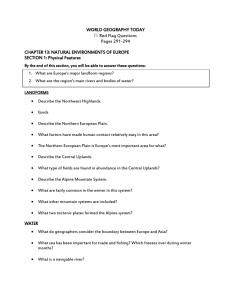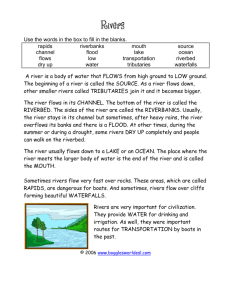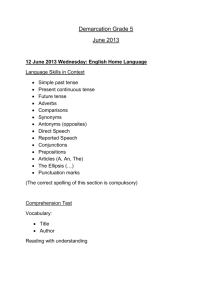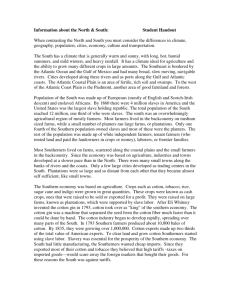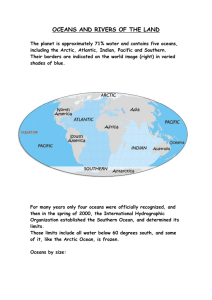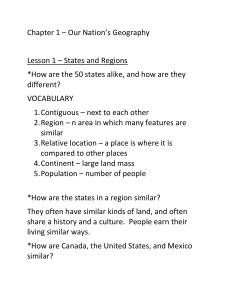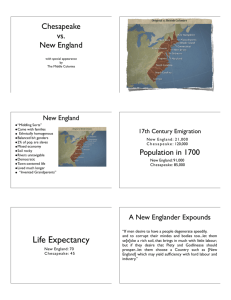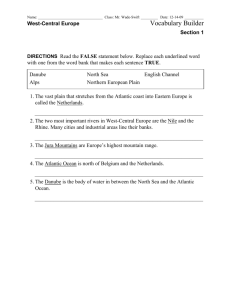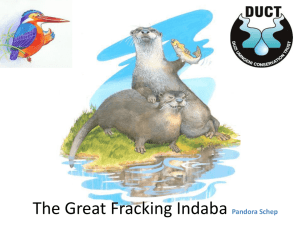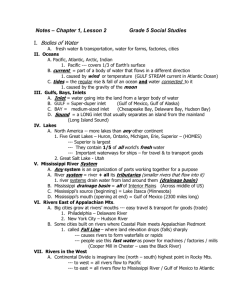grid and resources map
advertisement
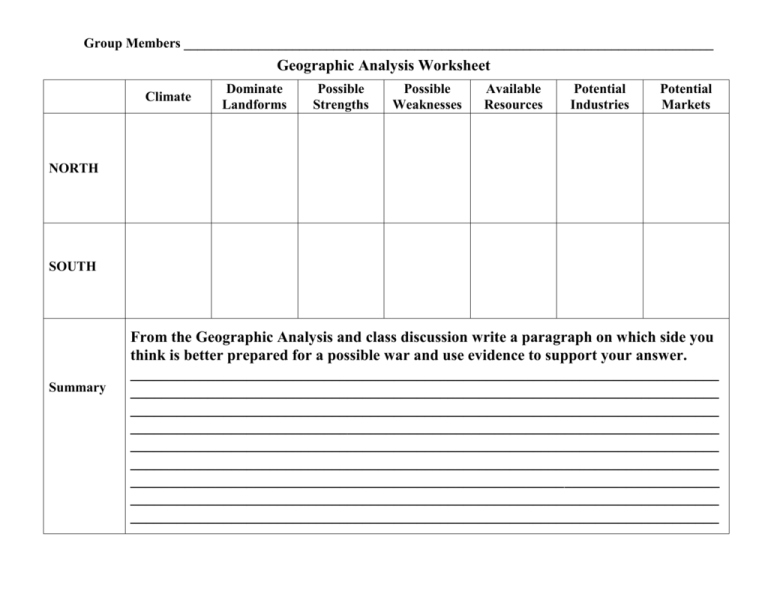
Group Members ______________________________________________________________________________ Geographic Analysis Worksheet Climate Dominate Landforms Possible Strengths Possible Weaknesses Available Resources Potential Industries Potential Markets NORTH SOUTH Summary From the Geographic Analysis and class discussion write a paragraph on which side you think is better prepared for a possible war and use evidence to support your answer. ____________________________________________________________________________ ____________________________________________________________________________ ____________________________________________________________________________ ____________________________________________________________________________ ____________________________________________________________________________ ____________________________________________________________________________ ____________________________________________________________________________ ____________________________________________________________________________ ____________________________________________________________________________ When contrasting the North and South you must consider the differences in climate, geography, population and economy. The South Intro The South has a climate that is generally warm and sunny, with long, hot, humid summers, and mild winters, and heavy rainfall. It has a climate ideal for agriculture andthe ability to grow many different crops in large amounts. The Southeast is bordered by the Atlantic Ocean and the Gulf of Mexico and had many broad, slow moving, navigable rivers. Cities developed along these rivers and as ports along the Gulf and Atlantic coasts. The Atlantic Coastal Plain is an area of fertile, rich soil and swamps. To the west of the Atlantic Coast Plain is the Piedmont, another area of good farmland and forests. Population of the South was made up of Europeans (mostly of English and Scotch-Irish descent) and enslaved Africans. By 1860 there were 4 million slaves in America and the United States was the largest slave holding republic. The total population of the South reached 12 million, one third of who were slaves. The south was an overwhelmingly agricultural region of mostly farmers. Most farmers lived in the backcountry on medium sized farms, while a small number of planters ran large farms, or plantations. Only one fourth of the Southern population owned slaves and most of these were the planters. The rest of the population was made up of white independent farmers, tenant farmers (who rented land and paid the landowners in crops or money), laborers, or frontier families. The North Intro The North has a climate of warm summers and snowy cold winters. The terrain is rocky, hilly, and not good for farming. These conditions along with a short growing season made farming difficult. Most of the forest was made up of timber used for shipbuilding. There are many sheltered bays and inlets on the Atlantic coast. Settlers found that ships could sail along wide rivers into many of these bays. Most of the rivers are fast, shallow, and hard to navigate. At a certain point, called the Fall Line—a plateau over which eastward-flowing rivers fell onto the plain—the many waterfalls of most rivers made them no longer navigable. At the Fall Line many ships dropped their cargo. Cities, which served as trading centers, grew up at these points. Soon people realized that the waterfalls were a cheap source of energy, and the waterpower began to be used to run factories. The period between 1800 and 1860 brought rapid population growth throughout the United States. In the North the overall population rose from about 5 million to 31 million during this time. Part of this increase was due to massive immigration. Between 1830 and 1850 along, over 2 million Irish, German and other northern Europeans arrived in the United States. Most of them settled in the North.

